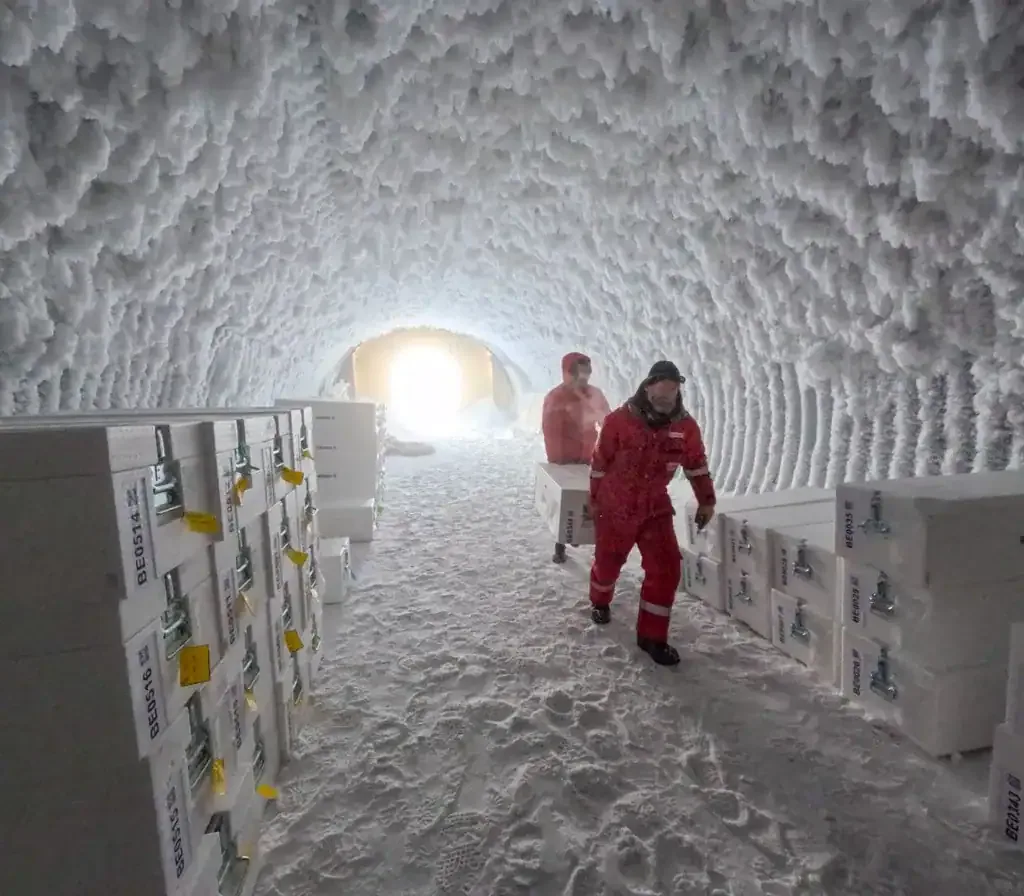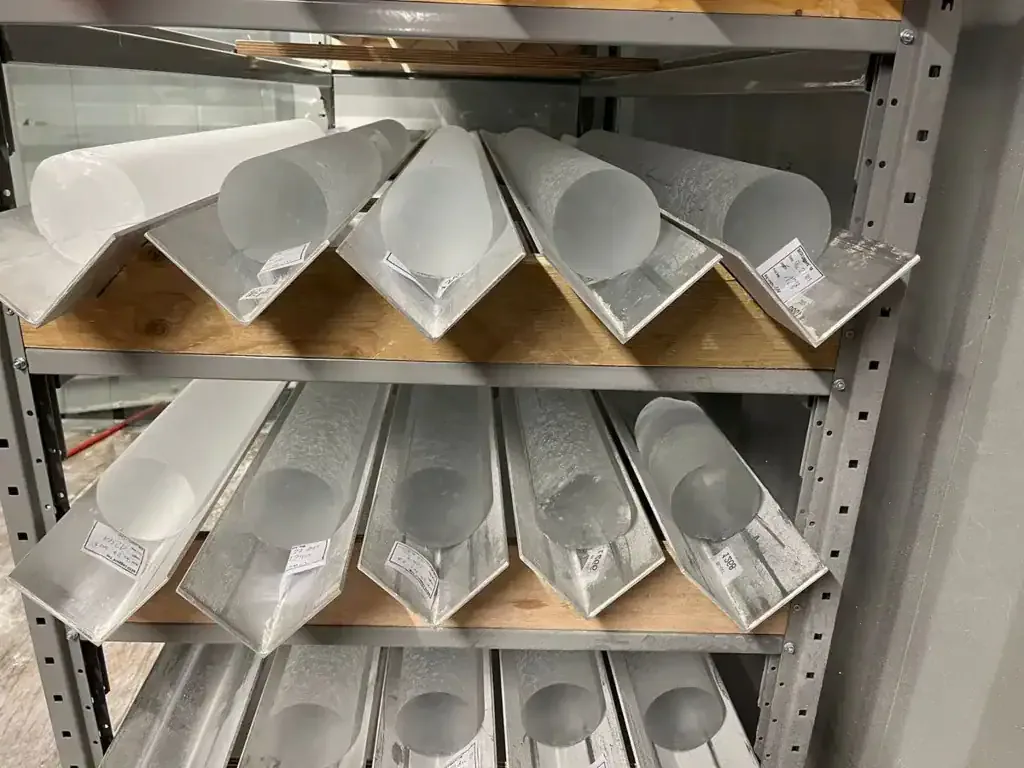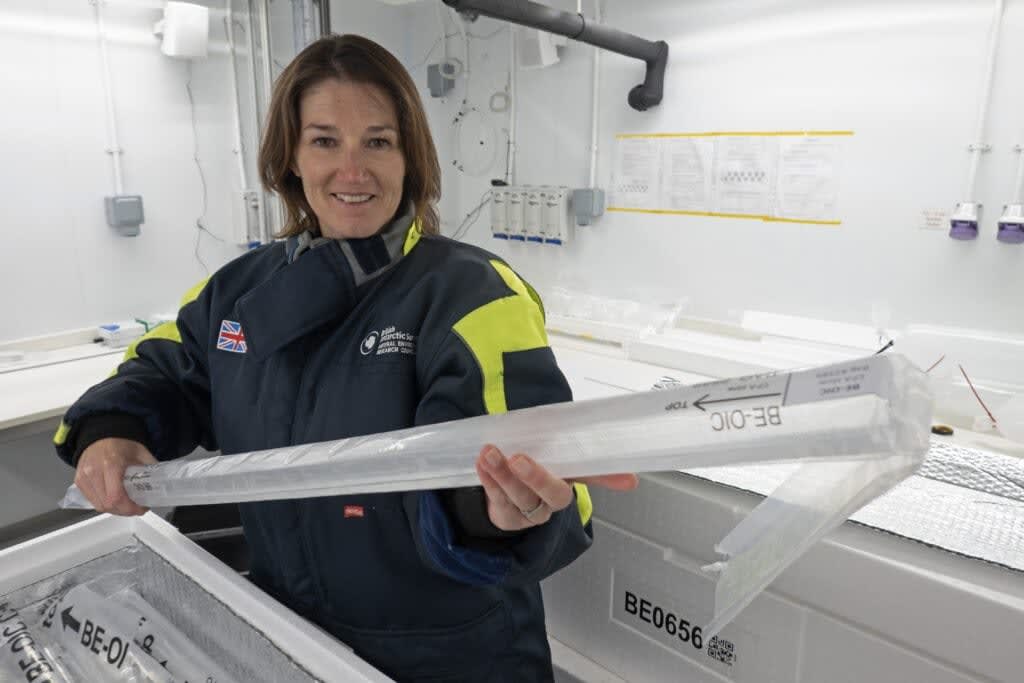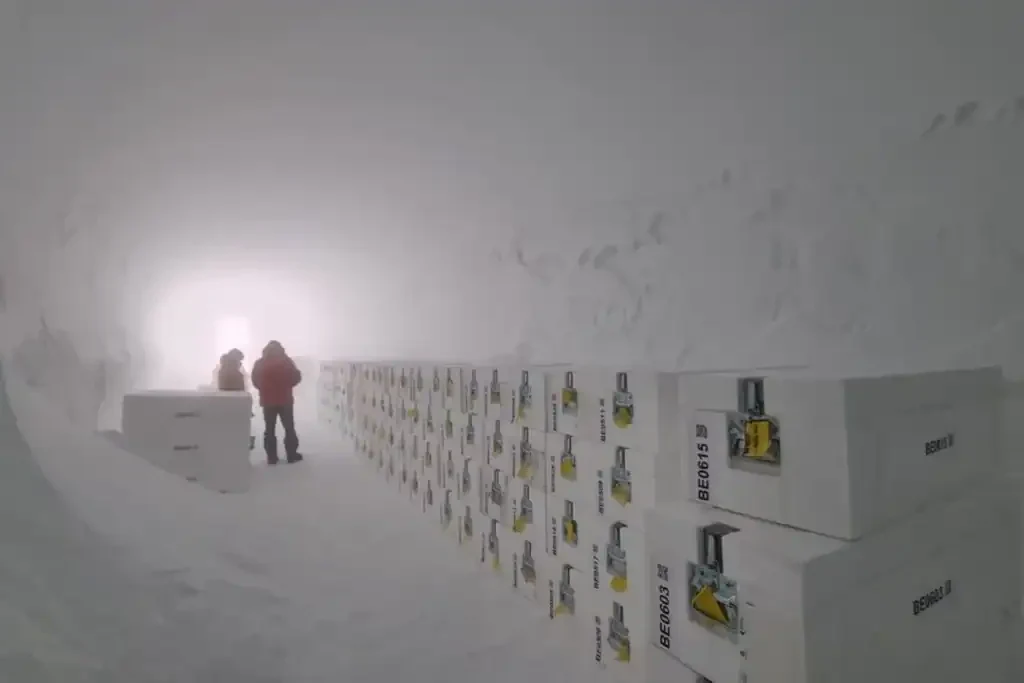Get ready for some serious time travel! The latest shipment at a chilly lab in Cambridge isn’t ordinary blocks of ice — they’re like time machines packed with history.
That’s right! Just this month, UK scientists unveiled special white crates filled with glistening tubes of ancient ice from Antarctica. These ice cores are highly significant, potentially dating back a staggering 1.5 million years. Now, locked away in a super cold environment at -23°C at the British Antarctic Survey (BAS), researchers have kicked off an intricate operation to melt the ice layer by layer, revealing secrets of a long-gone world.
What Can We Learn by Analyzing These Ancient Ice Cores?
These ice samples were extracted from a crazy depth of about 2.8 kilometers beneath the East Antarctic Plateau, specifically from a site known as Little Dome C. The drilling process spanned over four Antarctic seasons as part of the Beyond EPICA – Oldest Ice initiative, involving 10 European nations and 12 science labs. Their mission? To extend the current climate data available from ice cores, which caps at around 800,000 years.
The goal now is ambitious: these freshly obtained samples might let scientists look back beyond 1.5 million years.
“It’s super exciting to help with this worldwide project unlocking Antarctica’s icy secrets,” Dr. Liz Thomas, who spearheads the ice core research team at BAS, expressed. “No other spot on Earth holds such a lengthy record of previous atmospheric conditions like Antarctica does.”
Unlike stories we get from sediment cores on ocean floors, which only hint at past climate conditions, ice cores offer that vital direct evidence. Tiny bubbles trapped in the ice encase past atmospheric samples—think carbon dioxide, methane, and other gases preserved from the moment snow fell and settled into ice.
Deep within this project lies a pivotal climate enigma: what caused Earth’s climate patterns to flip about a million years ago?
For countless years, ice ages were pretty regular, typically recurrences every 41,000 years. But during what is referred to as the Mid-Pleistocene Transition, that pattern was disrupted. Gladly, the ice cycles started dragging on for 100,000 years instead. Scientists are still scratching their heads over why this shift occurred.
“To understand the variances our climate has gone through, we genuinely need to rewind the clock and unpack these processes and tipping points,” commented Dr. Thomas.
The new samples from Beyond EPICA might hold essential light on this transformation. Researchers aim to examine these ice cores for greenhouse gas levels, volcanic ash residue, sea salt, dust particles, and even minute marine life known as diatoms.
The melting process will use this method called continuous flow analysis, allowing scientists to rigorously measure a cocktail of elements and isotopes in a flow of melted ice through sophisticated analytical machines. One prime tool, the inductively coupled plasma mass spectrometer (ICP-MS), can tap into over 20 trace metals and chemical fingerprints, including rare earth elements.
“Our findings will yield the first continuous reconstructions spanning key environment indicators—atmospheric temperatures, wind patterns, sea ice spread, and marine ecosystem productivity—across the last 1.5 million years,” Dr. Thomas added.
Taking Insights from Frozen History to Inform Our Future
But don’t expect this analysis to wrap up anytime soon. In the forthcoming years, teams from laboratories around Europe will methodically melt, filter, and examine various portions of the substantial 2.8-kilometer core — that’s concerningly the height of eight Eiffel Towers stacked!
Right now, some of these ice sections have successfully reached locations in Germany and Switzerland, with more teams planning to dive into uncovering this icy narrative. However, most detailed research will take place at BAS’ Cambridge facility, which is among a select few labs globally equipped for super-sensitive, high-fidelity chemical analysis.
The implications are significant.
Growing evidence indicates that during some periods of the Mid-Pleistocene, greenhouse gas levels could have reached as high as, or even surpassed, today’s figures. “During those times, there’s a suggestion that the ice sheets were smaller, sea levels a notch higher, and CO₂ levels were similar to what we see now,” stated Dr. Thomas.
This research is crucial as CO₂ levels rose gradually over thousands of years in the past, but today’s surge has been astonishingly rapid—occurring within just 150 years. The planet is currently warming at an astonishing rate, faster than it has in nearly all of geological history, creating the need for urgency.
“The stunning dataset from these ancient ice cores will provide invaluable insights into how atmospheric CO₂ connects with climate events during an incredibly unexplored era in Earth’s history,” noted Dr. Thomas. To put it simply, these cores might unlock insights pivotal for anticipating future climate changes.
The Path of the Ice: From Remote Ice Fields to a Modern Research Lab
The saga of these old cores embarked far from CAMBER’s bright laboratory lights. It journeyed to an isolated spot about 40 kilometers from Concordia Station, a Franco-Italian scientific research base that miraculously sits 3,200 meters above sea level in the Everest-like Antarctic terrain.
In those brutal climatic conditions, resilience stood stout while teams operated, carefully extracting these ice pillars in meter-long sections and securing them in insulated storage. One engineer, James Veale, echoed how remarkable it was to grip a section of the raw ancient core: “Holding it carefully wrapped in my gloves, savoring the moment—I felt an incredible rush,” he reminisced in a chat with the BBC.
After being carefully stashed in an ice cave, the ice made its dramatic journey by ship to Europe. Later, they were delivered in refrigerated vans all the way to the British Antarctic Survey’s grounds.
Once inside, researchers are restricted to 15-minutes in the chilling freezer to harness the raw materials due to danger from the freeze. Visible alerts light up thick above the entrance, and a hidden emergency escape tunnel ensures exteriorly what happens if an error arises.
The path traces a small but painstaking timeline of melting, filtering, and collecting data over the course of weeks. Topping off an adventure of extensive effort could take several years to completely document missing chapters from Earth’s climate history.
“We genuinely are embarking into unpredictable territory in our historic timeline,” noted Dr. Thomas. “We constantly hope to uncover all these breathtaking secrets.”
This narrative unfolds from the original story posted on ZME Science. Want to be in the loop constantly? Subscribe to our newsletter to catch the latest sci-news!























